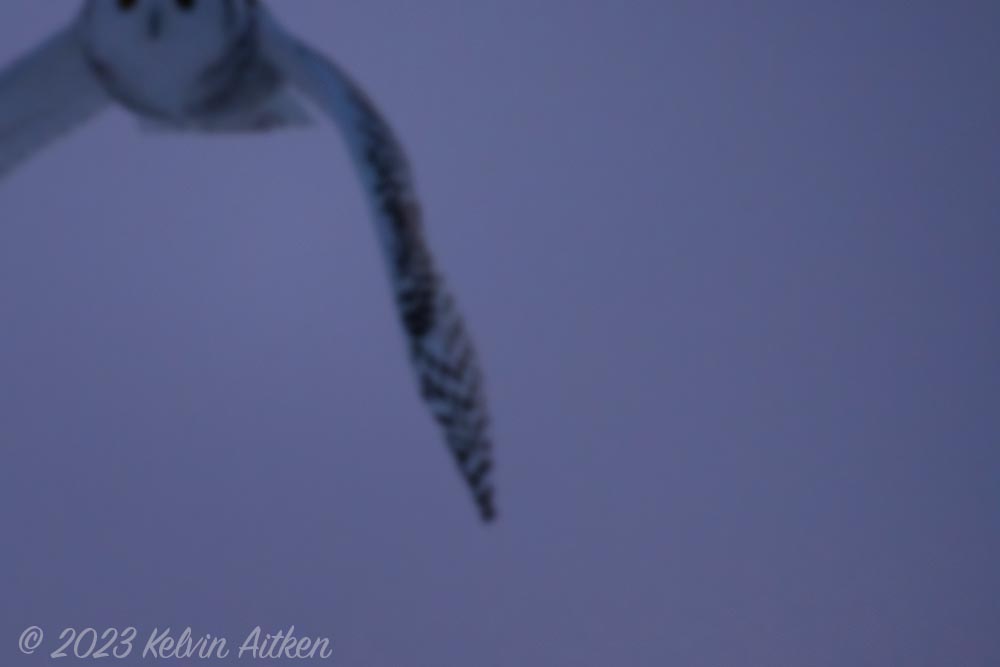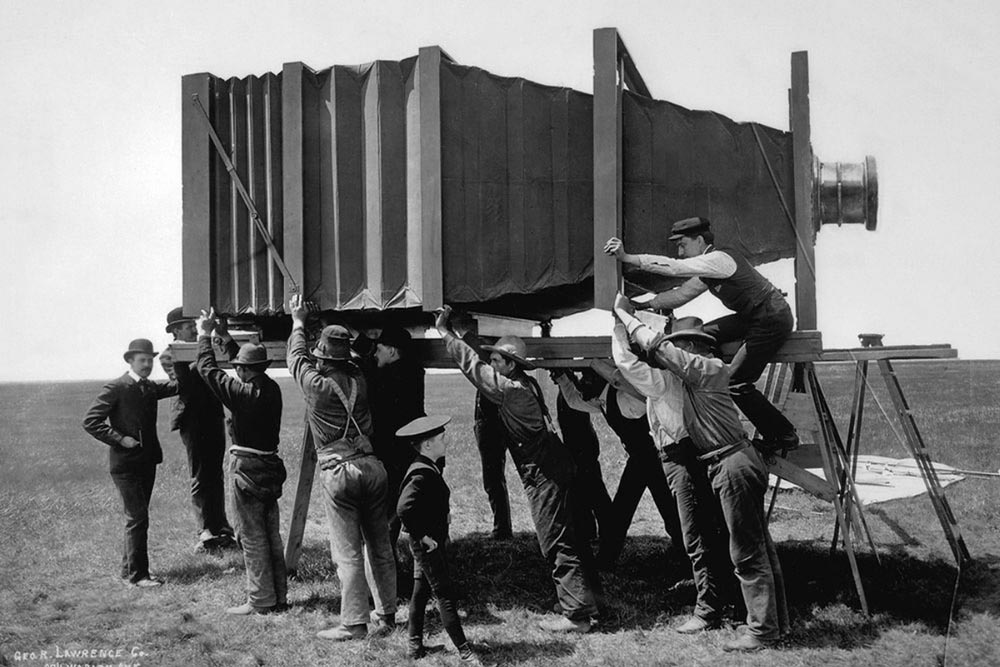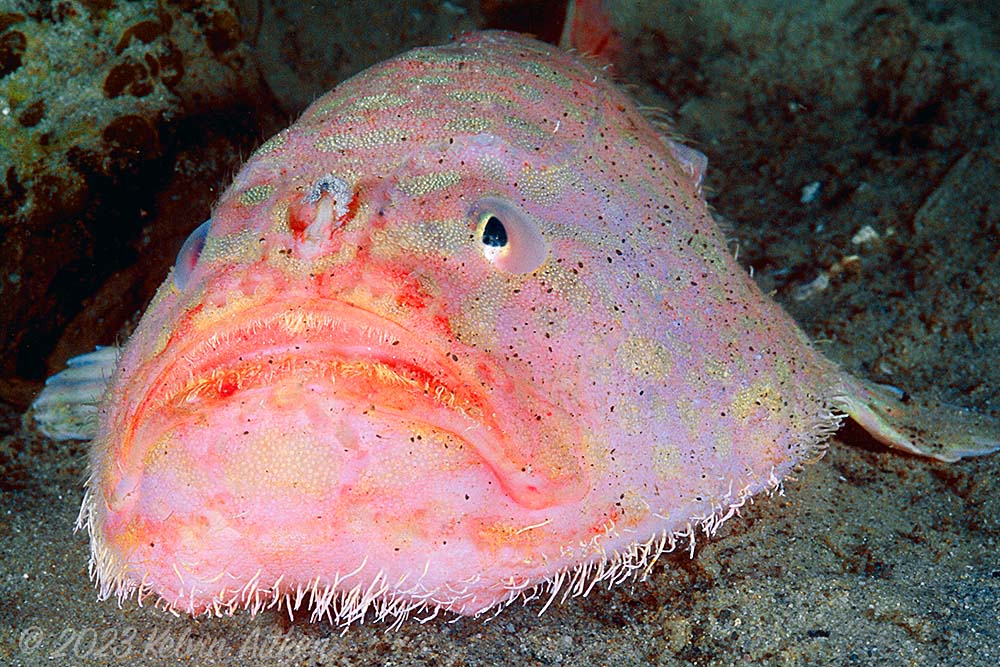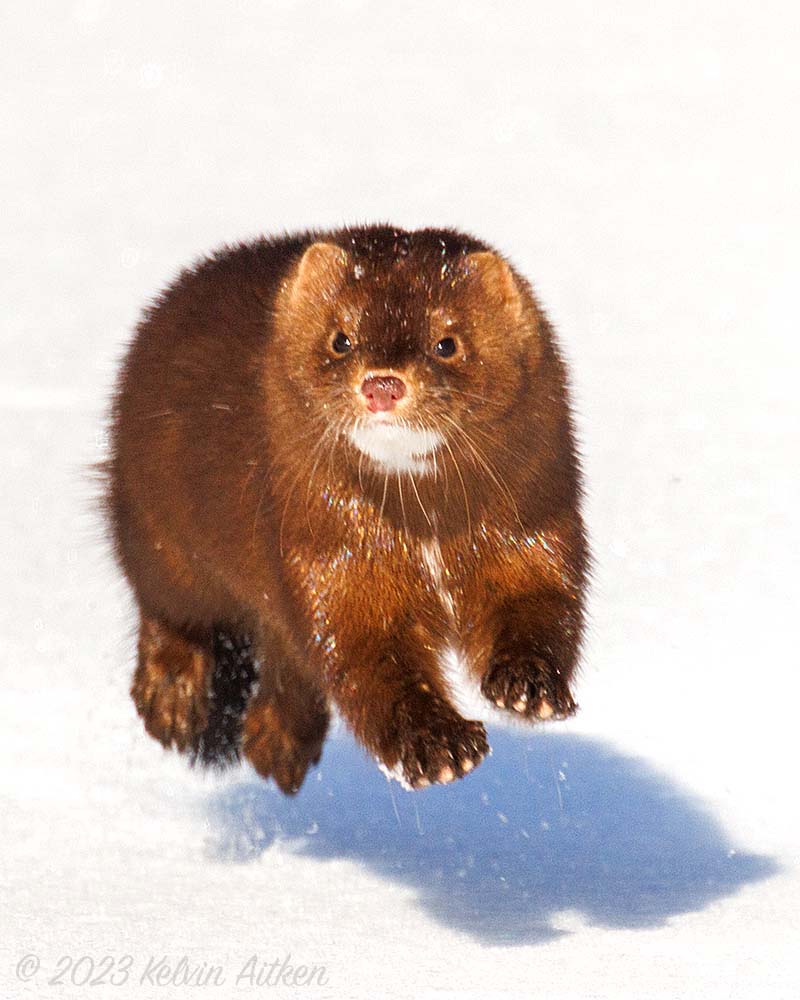Camera Defaults
Start Your Day Prepared For AnythingIt's the simplest mistakes that can be the most costly.
I was on the Alcyone, one of the Cousteau Society ships, when I met Eddie, an American who had been flown out to Australia to fix a serious problem. Their very expensive movie camera housing, a beast of a thing that needed a crane to get it onto the water, was leaking and they couldn't fix it.
Hours had been spent trouble shooting the camera. Days had been lost with no productivity. The crew was bored, irritated and restless.
In a last ditch effort, they flew Eddie out from LA, multiple flights to get him to the nearest fishing village with a pier large enough to take the Alcyone.
Eddie turned up, looked at the huge housing, hummed, hawed, muttered. Bent down. Looked underneath.
"You're missing a bolt."
Problem fixed. It cost a week and a few hundred thousand in productivity.
In wildlife photography, it's usually the very simplest of things that will have you miss shots. Let's look at some of those and figure out how we can bullet-proof our photographic endeavours.

Dammit. Missed again.
Have Default Settings.
What does that mean? Default settings are what you set on your camera to ensure that, in the worst case scenario, you will get some sort of result that will produce a useable image.
You will need to settle on the following settings: shutter speed, aperture, ISO, auto focus.
You will need to ensure you have: a working camera, fresh batteries, a correctly formatted memory card, an appropriate lens.
All of the other stuff, like tripod, flash, tripod head, backpack, lunch, water, etc are not what we are dealing with here. What we are looking at is a situation where you are suddenly presented with a photo opportunity, which is probably fleeting at best, when you least expect it.
What can you do to ensure you get, at the least, "something".
My photographic day almost always starts with me getting into my car. I will either shoot from the car or use it to go somewhere that is a start of a hike. In all cases, I need to have my camera set to a default set of parameters before I start the car.
The first thing to do is ascertain the conditions out there in the big wide world. Is it dark - pre dawn or heavily overcast? Is it raining, foggy or bright sunny blue sky (yuk)?
With that info, assume that as soon as you drive out onto the street, a unicorn with a wolf riding on its back will appear. What lens/settings will you need to get a useable shot?
In other words, if you have a photo op right at the start of your trip/hike, what settings will you need? When you figure that out, make it so BEFORE you leave your dwelling.
The Lens
Let's work backwards. Start with the lens as that will dictate many of the other settings. I usually leave the house when it's dark, before sunrise. So I want my fastest (lets in more light) long lens (cos I'm shooting animals which don't like me). For my situation, that's a 600mm.
The lens has some settings/switches that I need to check. Is auto focus turned on? What's the focus distance limiter set to (if your lens has one)? Are there any other switches that need to be turned on or off? Check them all.
Due to Murphy's Law, if a switch can be moved that will stuff up your shots, it will move. So I tape all mine down, folding over one end of the tape so that it juts up a bit. That way you can quickly peel it back if you need to make changes.
Is the lens hood on? Have you taken off the front lens cap?
All pretty obvious, but this is a checklist for a reason. Bolts are left off housings, after all.
Attach the lens to your camera body.

When you forget to turn on auto focus
The Camera
Turn the camera on and leave it on. You should have power saving settings applied to your camera so that it goes to sleep after a period of time that you set. That way you won't drain your battery but it will wake from sleep as soon as you touch the shutter button. With a bit of practice, you will develop muscle memory to hit the shutter button as you grab the camera, so that it's fully awake and functioning by the time you get it up to your eye.
Speed counts, after all.
Check that you have fully charged batteries installed. Even if you THINK you have, CHECK that you have. Assuming will come back to kick you in the butt.
With the camera on and batteries fully charged, check your card. Does it have any images on it? Unless you have a very good reason, you should start with a totally empty card. If the card is empty, format it. If the card has images on it, download them and then format the card. Or at the very least, be aware what you have on your card before you start out.
Formatting the card will delete all images then reset the filing software to default, avoiding any issues from you deleting images via your computer (which you should not do, always use the camera Format function).
Once done, your camera and lens are ready to go. You just need to apply your default settings.
Shutter Speed
Your default settings will change over the first hour or two, assuming that you start out pre-dawn. If you set off after sunrise, you will adjust your settings to your daytime default, which we will sort out below.
If I start out in the dark or before sunrise, I have my shutter set to the lowest possible speed that will get me a useable shot out of a motordrive burst. With my 600mm that's 1/125 second. I can hand hold it at 1/15 sec but I'm preparing for a quick grab shot as the wolf crosses the road so I opt for the faster speed.
Aperture
I then set my aperture to wide open.
Don't screw this up. Forget every single person who has ever said to close down 1/3 or 1 stop to get "sharp images". If you are using a "real" top of the line lens (and you should prioritize lens quality over camera body whizz-bangery as a lens will rarely improve in technology while a camera body is out of date in a year or two) you should always use it wide open. If you're paying $10-20k for a good quality f2.8 or f4 lens but then stop it down, why not buy the cheaper slower version for 1/4 of the price? Right?
Even if you're using a cheaper off-brand or lower quality lens, open it up anyway. We're setting up for an extreme situation, so those f-stop shenanigans should be ignored. Besides, with modern post processing software, a soft image is no longer a deal breaker.
ISO
Set your ISO to Auto, assuming that your camera has that option. It used to be found only in top of the line cameras but now pretty much all of them have auto ISO.
Your camera settings are now ready for any situation.

But I don't like Auto ISO
Exposure Options
If you have never used Auto ISO, change the above to whatever you use and what your muscle memory is conditioned to. Shutter priority? Set it to your minimum useable speed, open aperture wide and set your ISO to something that will give you a result, even if that result will need 50,000 ISO.
Aperture priority? Open it wide and set your shutter speed and ISO to whatever gets you an image.
The important thing is to apply settings that will get you an image in extreme conditions.
Are you a manual shooter? I strongly suggest that for your "dark start" default settings you switch to one of the above. Why? Because light changes quickly before dawn and after sunset. If you are using full manual you will have to be constantly changing your settings as you hike or drive, which goes against the whole principle of "being prepared".
Also, with manual, what if you suddenly see a rare animal under a tree in heavy shade? With manual, you're probably going to underexpose your image by 1-3 f-stops. With any of the auto setups you will get something useable.
In all cases, once sunrise happens, you can change your defaults once or twice to account for the increase in light levels with you eventually changing your settings to what I would call "daytime default settings".
So, in my case, I might start out in the dark with my lens set to 1/125 second (or even 1/60 or 1/250 depending on the lens), wide open and Auto ISO.
As light levels rise and my ISO drops down below 1000, I increase shutter speed. I can do this without stopping to look through the camera, I just turn the appropriate dial and double check in the settings window on top of the camera.
Daytime Defaults
This is pretty basic and universal. First, set your shutter speed to double, or more, of your focal length. So, if using a 300mm, use 1/600 or more. A 600mm would be 1/1200 or more. Since those shutter speeds don't exist, bump up to the next highest available shutter speed.
If you're using a zoom lens, use your longest focal length in the calculation.
Feel free to double that again if you wish, especially when your anticipated subject is small and fast moving.
Now set your aperture. Yes, set it WIDE OPEN. Or whatever rocks your boat. Stopping down will only increase your ISO a bit, which is not a big deal at all with modern post processing software. But usually it's just a mind game, like overcoming the desire to expose everything at ISO 100. Totally unnecessary.
Finally, set your ISO. Again, I strongly suggest Auto ISO, but you choose whatever rocks your boat and what you're most comfortable with.
The three above steps will be different if you switch to a different lens. For example, I switch to a longer, slower lens during the day, so my defaults change a little to suit the new setup.
The point here is that you want a default exposure that will give you a useable result when something sudden occurs. If you come upon a subject that's sticking around, then you can adjust your default settings to suit your desired outcome.
If you've made it this far, you might think this is a typical overstated bunch of bs clickbait. But I guarantee you this: if you settle on default settings for your current camera setups then use them, you'll end up with more useable shots. At day's end, you'll be more productive and have shots that normally you would not have.
Plus one day, it will pay off BIG time. You think a wolverine is going to stick around and pose for you? That eagle is going to drop the fish and came around for a do-over? The badger is going to go back down the hole and come up with another gopher in it's jaws?
I don't think so.
Plus if you are utilizing the most productive time for wildlife (full dark to sunrise, sunset to full dark) there are more chances of finding active wildlife and therefore, with default settings, more chances of getting a result.
And that, folks, is what it's all about.

Ready when you are
